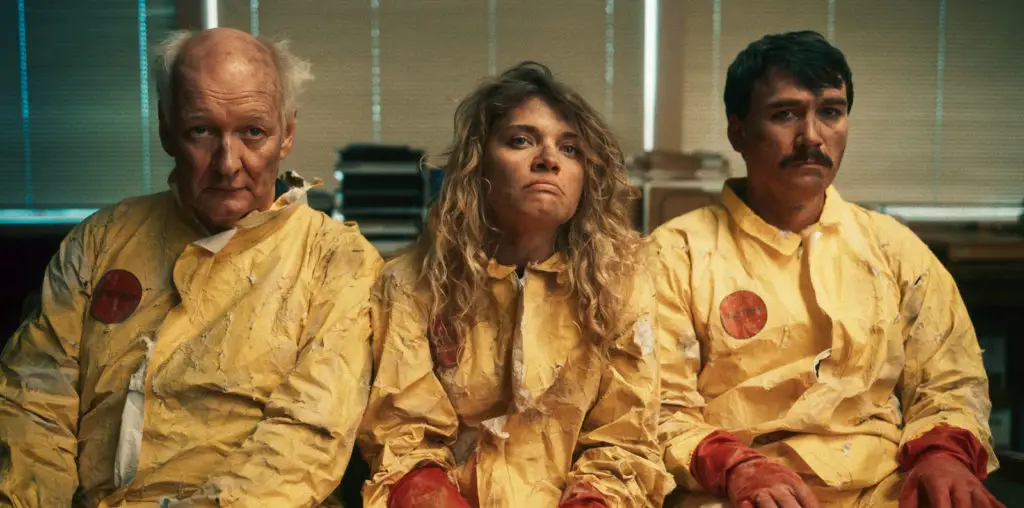
Imitation may be the sincerest form of flattery, but in cinema (both indie and Hollywood) it is the least interesting form of filmmaking. After a while, it becomes too easy to fall into the cynicism that all movies look alike and sound alike, with bold originality a concept that disappeared many years ago.
Mercifully, there are filmmakers like Sam Wells who are willing to take wild and outrageous risks and create productions which cannot be compared to anything currently in release. Wells is the New Jersey-based experimental artist whose first feature “Wired Angel” is a work of such audacious and outlandish originality that viewing it comes as a jolt to the soul and a rush to the mind. An equal mix of madness, brilliance, character and courage, “Wired Angel” is a stunning reminder of what can be accomplished with the tools of cinema.
For anyone who only prefers a film that drips along from Point A to Point B to Point C and so on, “Wired Angel” will disappoint and confuse. The film jettisons the concept of linear story-telling for an avant-garde series of tableaux which tell about the life, death and impact of Joan of Arc with a skill and style that leaves one breathless. Indeed, the film often plays like a celluloid Rosarch Test, with images of a harrowing, haunting and frequently baffling nature that assault the senses without mercy until the mind is forced to respond. Imagine that…a film that makes you think!
“Wired Angel” is shot on black-and-white reversal film, which provides a rich chiaroscuro visual appeal that makes the blacks impenetrable and the whites fiery. Recurring images of ominous crosses, balls of smoke, showers of ash, rolling fire, unforgiving iron bars, sacred religious rites and bursts of hot light flash and crash across the screen with abstract and nightmarish grace, mirrored in a brilliant aural tour-de-force by composer Joe Renzetti’s multi-layered score that combines bells, chants, instrumental symphonics and tonal waves of doom. Beautiful images of a placid garden in Joan’s childhood are transposed against the misery of Joan’s prison cell, where the faces of her clerical captors peer down at her with stolid contempt. Images of jarring contemporary happenings (a man with a ray gun, neon light sabers) come and go with wicked glee, as if reminding the audience how contemporary society embraces Joan the warrior into a new modern image which suits our heroine-worship needs.
“Wired Angel” divides Joan’s story into six sections, each running approximately 15 minutes. There is no dialogue, although the transcripts of Joan’s fatal trial are read in digitally distorted French and English. As Joan, actress Caroline Ruttle wears her fate with stoicism, forcing the audience to read her mind as she confronts her accusers, wastes away in isolation, withstands the challenge to her faith and, ultimately, surrenders to the flames. Whereas that great silent portrayal of Joan by Maria Falconetti in Dreyer’s “The Passion of Joan of Arc” stunningly recreates the inner turmoils of the ill-fated woman, Caroline Ruttle’s performance forces the audience to recreate the very same turmoils. It is a weird experiment which pays off handsomely, literally creating a mental interactive film experience.
In his notes for the film, Sam Welles describes his work as a “psychological and neurological portrait in images and music of Joan of Arc, her milieu and culture.” In many ways, “Wired Angel” is also a challenge to a self-satisfied film world to dare and dream in a manner that spins outside of that proverbial and dreadful box. This “Wired Angel” is a Heaven-sent triumph.
